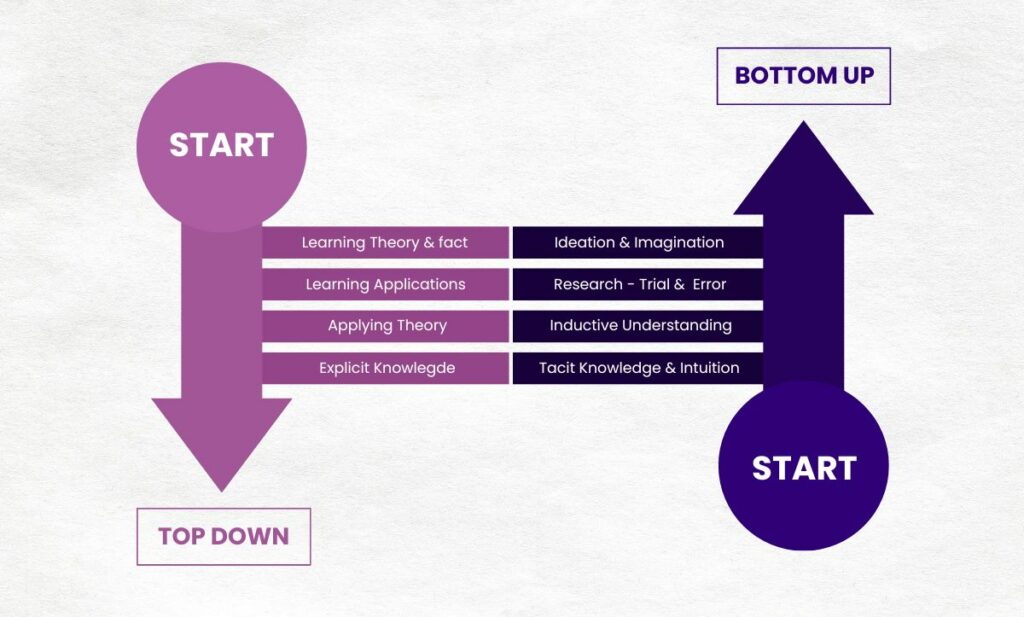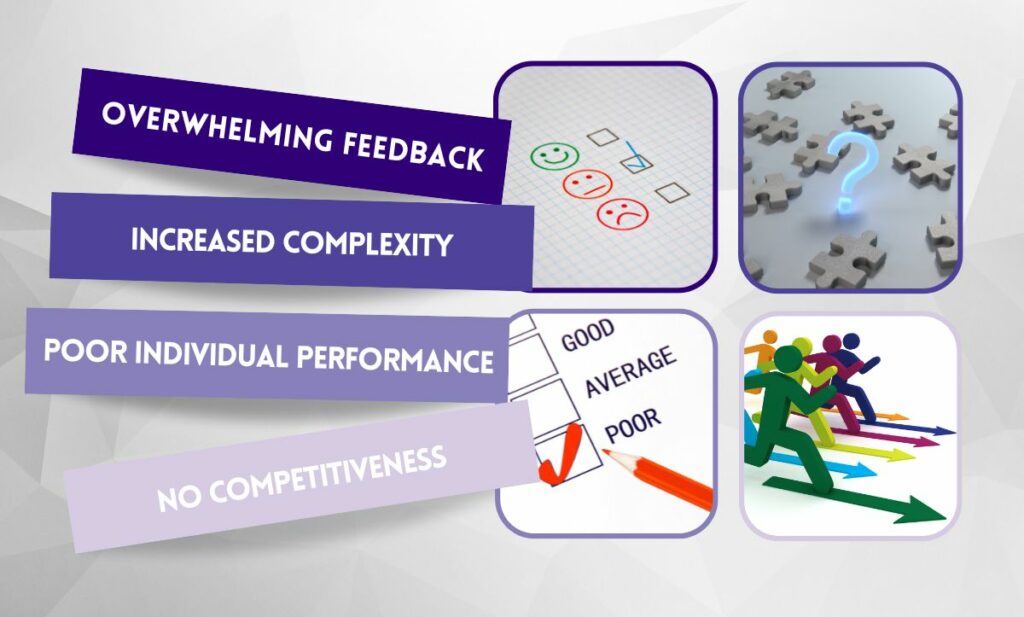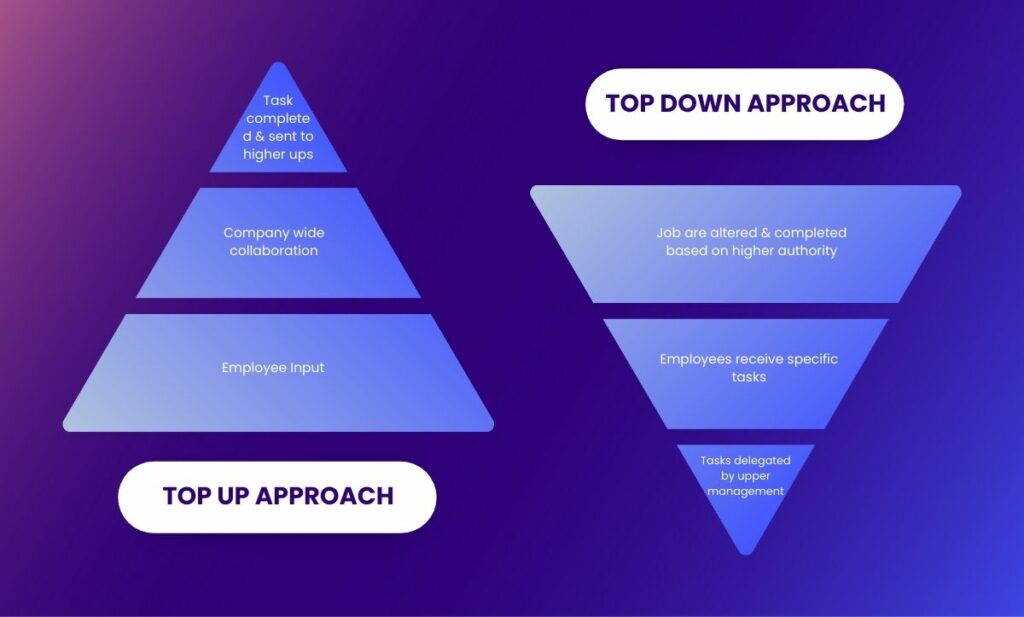
Unlock True Learning Potential of your Employees: Embrace Bottom Up Learning
Imagine building a house starting from the foundation rather than the roof. Bottom Up Learning follows the same principle, starting with the basic building blocks of knowledge and gradually building up to a complete understanding of a concept.
As the famous quote by Albert Einstein goes, “Learn from yesterday, live for today, hope for tomorrow. The important thing is not to stop questioning.” And that is the essence of Bottom Up Learning, a process that encourages inquiry-based exploration and hands-on experiences.
A study conducted by the Association for Psychological Science found that students who learned through Bottom Up methods performed significantly better on tests and had a deeper understanding of the material.
Take for example the game of chess, which requires understanding the rules and the movements of each piece. By starting with the basics, learning each piece’s abilities and limitations, and gradually building up to more complex strategies, players can develop a deeper understanding of the game and improve their gameplay.
In this blog post, we will explore what Bottom Up Learning is, its advantages and challenges, how to implement it, and how it compares to Top Down Learning. So, let’s dive in and discover how embracing Bottom Up Learning can unlock true learning potential.
What is Bottom Up Learning?

Just use the bottom up part
Bottom Up Learning is a valuable approach for employees as it encourages active engagement, fosters creativity, and enhances problem-solving abilities. In a professional setting, this approach can help individuals develop new skills, improve existing ones, and gain a deeper understanding of their work.
Here’s a breakdown of the Bottom Up Learning process for working professionals:
Start with the basics: To adopt a Bottom Up Learning approach, start by identifying the foundational building blocks of your field or industry. This might involve learning key terminology, understanding industry trends, or familiarizing yourself with basic concepts.
Experiment and explore: Once you have a solid foundation, begin experimenting and exploring. This could involve taking on new projects, attending industry events, or conducting research on new technologies or techniques.
Practice and repetition: As you begin to explore, practice and repetition will help solidify your understanding. This might involve practicing new skills, attending workshops, or finding opportunities to apply your knowledge.
Build on your knowledge: Finally, use your newfound knowledge to build on your skills and understanding. This might involve taking on new challenges, pursuing advanced training or education, or seeking out mentorship or coaching.
Here are a few examples of how Bottom Up Learning can be applied in a professional setting:
Developing New Skills: If you’re looking to develop a new skill, such as coding or project management, a Bottom Up Learning approach would involve starting with the basics, practicing and experimenting, and building on your knowledge over time.
Problem-Solving: When faced with a complex problem, a Bottom Up Learning approach would involve breaking the problem down into smaller components, analyzing each component, and then working to find a solution from the ground up.
Innovation: Adopting a Bottom Up Learning approach can encourage innovation by fostering a mindset of experimentation and exploration. This might involve trying new techniques, technologies, or processes, and using your understanding of the basics to build new solutions.
Bottom Up Learning is a powerful tool for working professionals looking to expand their knowledge and skills, develop new approaches to problem-solving, and foster a mindset of innovation and creativity.
What are the Advantages of Bottom Up Learning?
Bottom Up Learning can offer several advantages to organizations that adopt this approach to education and training. Here are some of the key advantages of Bottom Up LearniNg in organizations:
Enhanced Employee Engagement: This learning structure encourages active participation from employees and allows them to take ownership of their learning. This approach can lead to increased engagement, motivation, and a sense of empowerment among employees.
Improved Knowledge Retention: By starting with foundational concepts and building on them gradually, it can help employees develop a deeper understanding of the material. This approach can lead to better retention of knowledge and increased ability to apply what has been learned in practical situations.
Flexibility and Adaptability: It is a flexible approach that can be tailored to meet the unique needs of each organization. This adaptability allows organizations to respond quickly to changes in the marketplace, technological advances, and other external factors.
Innovation: It encourages experimentation, exploration, and creativity. This approach can lead to innovative solutions and new ideas that can drive organizational growth and success.
Increased Collaboration: It encourages employees to work together, share ideas, and collaborate on projects. This approach can foster a sense of community and teamwork, leading to improved communication, productivity, and morale.
Cost-Effective: It can be a cost-effective approach to employee education and training. By using hands-on, experiential learning, organizations can reduce the need for expensive classroom-based training and travel expenses.
Overall, it can be a valuable approach for organizations looking to enhance employee engagement, foster innovation, and drive growth and success.
How to implement Bottom Up Learning?
Implementing Bottom Up Learning requires a shift in mindset and a willingness to embrace a new approach to education and training. Here are some key steps organizations can take to implement Bottom Up Learning:
Identify learning goals: Begin by identifying the learning goals for your organization. What are the key skills, knowledge, and competencies that your employees need to succeed? Understanding these goals will help you develop an effective learning program.
Start with the basics: Begin with foundational concepts and build on them gradually. This will help employees develop a deeper understanding of the material and retain what they have learned.
Encourage experimentation and exploration: This learning encourages experimentation and exploration. Give employees the freedom to try new approaches, technologies, or processes, and use their understanding of the basics to build new solutions.
Foster collaboration: It encourages collaboration and teamwork. Encourage employees to work together, share ideas, and collaborate on projects to foster a sense of community and teamwork.
Provide feedback and support: Providing feedback and support is crucial to the success of this form of learning. Give employees regular feedback on their progress and provide support and guidance as needed.
Emphasize hands-on, experiential learning: Hands-on, experiential learning is a key component of Bottom Up Learning. Provide opportunities for employees to apply what they have learned in practical situations to reinforce their understanding.
Use technology to support learning: Technology can be a valuable tool in implementing this learning program. Use online resources, e-learning platforms, and other digital tools to support learning and provide employees with flexible, self-directed learning options.
What are the Challenges of Bottom Up Learning?

While this learning format can offer many advantages, there are also some challenges to implementing this approach to education and training. Here are some common challenges of Bottom Up Learning:
Lack of structure: It can be less structured than traditional forms of education and training. This can be challenging for some learners who prefer a more organized approach.
Time-consuming: It can be time-consuming, as it requires learners to gradually build on foundational concepts. This can be difficult for learners who are under pressure to learn quickly.
Need for self-motivation: It requires learners to be self-motivated and take ownership of their learning. This can be challenging for learners who prefer a more structured approach with clear goals and objectives.
Potential for knowledge gaps: Because it starts with foundational concepts, learners may miss out on some critical information if they do not master these concepts. This can lead to knowledge gaps that may be difficult to fill later on.
Difficulty measuring progress: It can be difficult to measure in terms of progress and success. Because it is a more flexible and adaptive approach, it may be challenging to track learners’ progress and ensure that they are achieving their learning goals.
Need for strong facilitation: It requires strong facilitation to be successful. Facilitators must be able to guide learners through the learning process, provide feedback and support, and ensure that learners are making progress.
Overall, this learning format can be a powerful approach to education and training, but it does require learners to be self-motivated, facilitators to be skilled and adaptive, and organizations to be willing to embrace a more flexible and adaptive approach to learning. By being aware of these challenges and addressing them proactively, organizations can successfully implement Bottom Up Learning and reap the many benefits it has to offer.
Bottom Up Learning vs. Top Down Learning
Bottom Up Learning and Top Down Learning are two different approaches to education and training, each with their own strengths and weaknesses. Here’s a comparison of the two approaches:

Bottom Up Learning:
- Starts with foundational concepts and gradually builds on them
- Focuses on experiential, hands-on learning
- Emphasizes experimentation and exploration
- Encourages collaboration and teamwork
- Allows for more flexibility and adaptability
- Requires learners to be self-motivated and take ownership of their learning
- Can be more time-consuming and less structured
- Can be challenging to measure progress and success
Top Down Learning:
- Starts with complex concepts and breaks them down into smaller parts
- Focuses on lecture-style teaching and memorization
- Emphasizes following established rules and procedures
- Encourages individual learning
- Offers clear goals and objectives
- Provides a structured, well-defined learning experience
- Can be more efficient and quicker
- Can be less engaging and more passive
Both approaches have their benefits and drawbacks, and which approach is best for a given situation will depend on a variety of factors, such as the learner’s goals and preferences, the subject matter being taught, and the learning environment.
In general, Bottom Up Learning may be more effective for teaching practical skills and promoting creativity and innovation, while Top Down Learning may be more effective for teaching abstract concepts and promoting efficiency and standardization.
Ultimately, the best approach to education and training will depend on the specific needs and goals of the learners and the organization.
Key Takeaways
Embracing Bottom Up Learning can unlock the full potential of your employees and lead to a more engaged, motivated, and effective workforce. By allowing employees to take ownership of their learning and explore new ideas and approaches, organizations can foster a culture of innovation, collaboration, and continuous improvement.
While implementing Bottom Up Learning may require some adjustments to traditional approaches to education and training, the benefits are well worth the effort. By providing employees with the tools, resources, and support they need to succeed, organizations can create a dynamic learning environment that promotes growth and development at all levels.
So, if you’re looking for ways to boost productivity, engagement, and innovation in your organization, consider embracing Bottom Up Learning and see the transformative impact it can have on your workforce.
